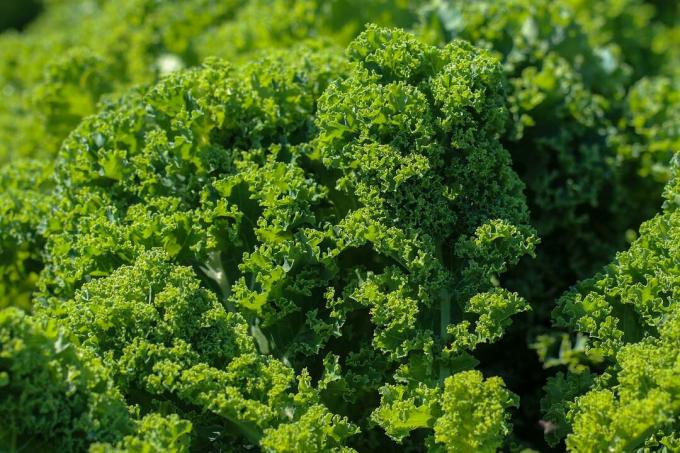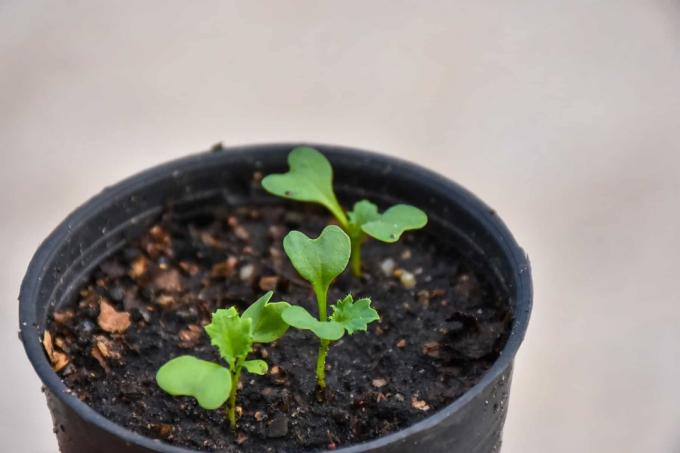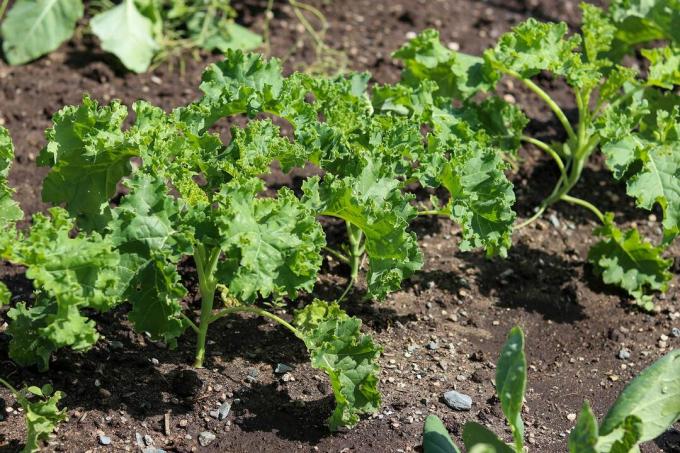
Kale is a classic winter vegetable and because of its many good properties it is very popular and easy to plant in the garden. Here you can find out everything about the planting time, site conditions and planting neighbours.
In a nutshell
- Don't plant too early
- Danger of night frosts
- prepare ground
- Observe crop rotation
Table of contents
- Best planting time
- Optimal site conditions
- Instructions for planting kale
- Subsequent care
- Crop rotation and mixed culture
- frequently asked Questions
Best planting time
Kale can be grown from mid-May after the last night frosts and planted directly in the bed between June and July. Since this winter vegetables is usually not harvested until late in the year, the sowing also takes place comparatively late. At the time of planting, the seedlings should be about five to ten centimeters tall. The latest date for planting is mid-July.

Optimal site conditions
For a bountiful harvest, it is important to create optimal conditions. A sunny location and deep, nutrient- and humus-rich soil play a decisive role. So what to do?
- to acidic soil improve with lime
- pH between 6.5 and 7.5 is optimal
- avoid waterlogged surfaces
- Thoroughly loosen the soil
- remove weeds and root debris
- compost and/or incorporate worm soil
- about five liters of compost per square meter
Tip: To find out what the soil is like, you can do a test or pay attention to so-called pointer plants. Indicative of an acidic soil z. B. daisy, speedwell, chamomile, sorrel and sorrel.
Instructions for planting kale
About six to eight weeks after sowing once they have four to five leaves, they are ready to plant out. It is best to plant them in spaced rows.
- Mark planting holes at sufficient intervals
- 50 cm for low and medium-high varieties
- in tall varieties about 75 cm
- mature compost in planting holes
- plant a little deeper than before in the plant pot
- Finally, cover the plants with vegetable protection nets
- protects against cabbage white and other pests

Tip: Experts recommend growing seedlings in small pots yourself. The selection of varieties is then much larger.
Subsequent care
Immediately after planting the kale, it must be watered thoroughly to make it easier for the plants to grow. But that is not all:
- water regularly and constantly over the next few weeks
- especially during the summer months and when it is dry
- Keep the area around the plants weed free
- regularly chop between the plants
- Soil is aerated, evaporation is kept to a minimum
- fertilized again three months after planting
- ideally with organic vegetable fertilizer
- mulch soil, when plants are 10 cm high

Tip: To improve the stability of the plants, you can pile up the stems with soil. In winter it can make sense to put supports to the side of the plants so that they do not buckle under the weight of snow.
Crop rotation and mixed culture
When choosing the plant neighbors as well as pre- and post-cultures, you should take a closer look. The right partners can keep pests away and stop the spread of disease. They prevent the soil from being leached and prevent soil fatigue. So what should you watch out for?
- Kale is one of the cruciferous vegetables
- Cruciferous vegetables incompatible with each other
- do not plant in the same place every year
- do not plant next to each other
- Maintain a break in cultivation of at least four years
- otherwise infection with clubroot threatens
- New potatoes, field beans and legumes are good pre-cultures
Tip: Kale feels best in the vicinity of cucumbers, tomatoes, beans, peas, lettuce, beetroot, celery and nasturtium. On the other hand, onions, garlic, other types of cabbage, and potatoes are not good planting neighbors for kale.
frequently asked Questions
Young plants grown on the windowsill or in the greenhouse should be hardened off before moving outdoors. This can be done by placing them under foil or in a cold frame where they can slowly acclimate to the cooler temperatures and daylight. Or you just put them outside for a few hours during the day and bring them back inside at night, as long as the night temperatures are still too cool.
Frost is good, but not essential. It ensures that the cabbage tastes milder and less bitter as the sugar content increases. To do this, however, these vegetables must be exposed to the frost for a long time, a single frosty day is not enough to achieve the desired effect.
The best-known varieties include 'Half-height green Krauser' with dark green, medium-strong foliage, the particularly hardy 'Kadett', 'Frostara' with very broad and juicy leaves, 'Westländer Winter' with ruffled leaves and 'Lerchenzunge' with narrow, slightly hanging and slightly ruffled Scroll.



